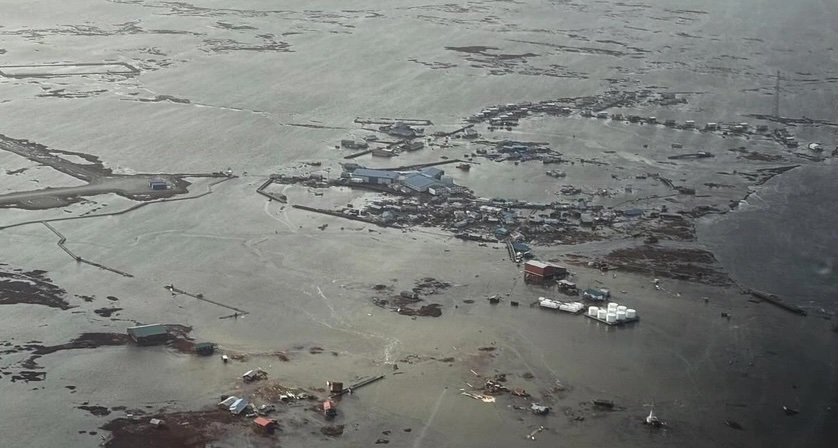Already a subscriber? Make sure to log into your account before viewing this content. You can access your account by hitting the “login” button on the top right corner. Still unable to see the content after signing in? Make sure your card on file is up-to-date.
President Donald Trump has approved $25 million in disaster relief for Alaska following a devastating series of storms.
Getting into it: The storms (which included the remnants of Typhoon Halong) tore through Western Alaska, bringing destructive winds, record-high storm surges, and widespread flooding that leveled infrastructure and left entire villages uninhabitable. Some of the hardest-hit areas included the Yup’ik communities of Kipnuk and Kwigillingok, where up to 90% of buildings were destroyed. Authorities have since confirmed that one person died from the storms, and an additional two people remain missing. In addition, more than 1,500 people were displaced, many of whom had to be airlifted by the military to Anchorage due to the isolation of the impacted areas.

In response to the devastation, Alaska Governor Mike Dunleavy formally requested a federal disaster declaration on October 16. President Trump approved the request just days later, unlocking an initial $25 million in federal aid. Trump announced the approval on his social media platform, calling it an “honor” to support Alaskans during their time of need. The declaration also authorized the Federal Emergency Management Agency (FEMA) to coordinate with state emergency agencies on ongoing relief and recovery operations.
The $25 million in federal funds will be used to support debris removal, infrastructure repair, emergency sheltering, fuel and food distribution, and restoration of essential services such as water, sewer, and power in storm-damaged communities.
Under the state’s emergency assistance program, eligible Alaskans can receive up to $21,250 for home repairs and another $21,250 for other disaster-related needs such as vehicle damage or essential personal property. While the president has not yet approved federal individual assistance (which would double those amounts), state officials say additional support may be forthcoming as assessments continue.







